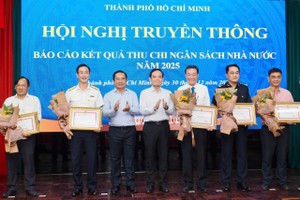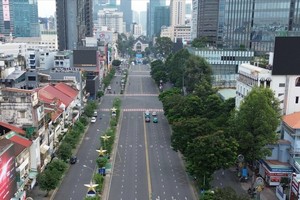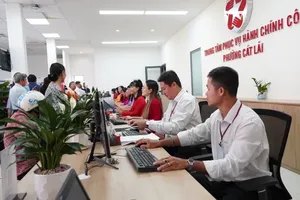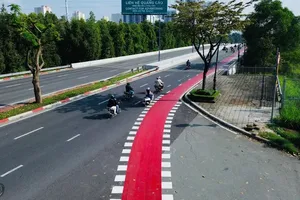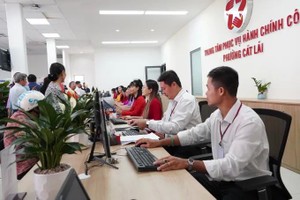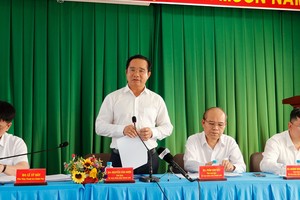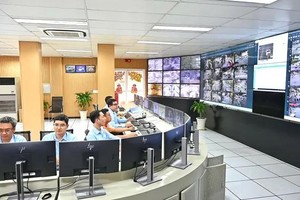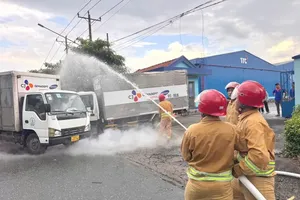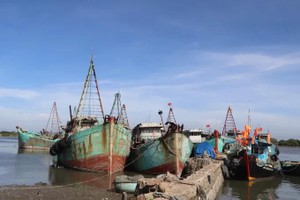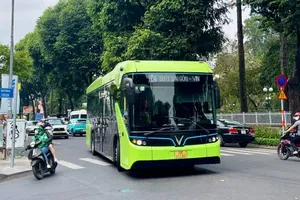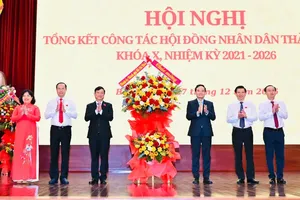
Surface ground sinking at worrying speed
Studies have confirmed that the subsidence is happening on a large scale and is uneven across different districts. Specifically, the study conducted by Dr. Le Van Trung indicated that district 2, 7 and Binh Thanh are sunken the most at about 20cm. Hoc Mon District is the least sunken at about 5 - 10cm.
The subsidence rate continues to increase rapidly, now being on an average of 1.11cm a year, as shown in a research done by the French CLS Group from 2015 to 2017. A more detailed report from the Ministry of Natural Resources and Environment has revealed An Lac ward, Binh Tan district as the spot with the highest average sinking rate at 6.8cm per year.
This rapid sinking is partly due to the fast urbanization rate combined with excessive exploitation of underground water, said Mr. Hoang Van Bay, Director of the Department of Water Resources Management.
Most surface land in HCMC is covered by transport infrastructure and buildings, which greatly reduces surface water penetration downward through the soil profile, hence limiting the replenishment of underground water.
Additionally, underground water is being overexploited to serve domestic, production and construction needs, creating hollow pockets that cause the surface to sink quickly. Other internal reasons include the city’s weak geological foundation which consists of marshes and interlaced canals.
Underground water harvest to be ceased
The Ministry of Natural Resources and Environment has ordered the city to assess the situation and refrain from collecting underground water in certain areas. Approaches include constructing water supply system fueled by surface water, and building a monitoring system to detect excessive depletion of underground water and promptly handle them.
Regarding this issue, Ho Chi Minh City Department of Natural Resources and Environment stated that more than 700,000m3 underground water is being harvested every day. Citizen’s households use more than 300,000m3, while the rest goes to factories and water supply units of the city.
The Department has advised the city’s People’s Committee to reduce underground water collection and fill up underground wells from now until 2025. The main targets of this plan are households, along with units operating near industrial parks and exploitation projects of Saigon Water Supply Corporation (Sawaco).
The subjects above have been instructed to reduce underground water usage and switch to other sources. For businesses operating within industrial zones, their license for underground water exploitation will not be renewed once expired. For Sawaco in particular, the amount of water collected are restricted down to 30,000m3 and 28,000m3 per day depending on their purpose. In the long run, the exploitation of underground water is to be completely prohibited once the city water supply system is completed to reduce the risk of subsidence and flooding in HCMC.
